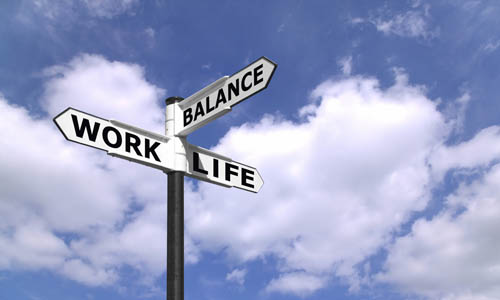GENDER-SEXUALITY
Are Better Work-Life Policies the Key to Gender Equality?
February 19, 2013 · 0 Comments

By Maya:
The always-brilliant Stephanie Coontz thinks so. In an op-ed in the New York Times this weekend, she argues that gender equality in the US has stalled primarily because of our awful work-family policies.
For more than two decades the demands and hours of work have been intensifying. Yet progress in adopting family-friendly work practices and social policies has proceeded at a glacial pace.
Today the main barriers to further progress toward gender equity no longer lie in people’s personal attitudes and relationships. Instead, structural impediments prevent people from acting on their egalitarian values, forcing men and women into personal accommodations and rationalizations that do not reflect their preferences. The gender revolution is not in a stall. It has hit a wall.
…Astonishingly, despite the increased workload of families, and even though 70 percent of American children now live in households where every adult in the home is employed, in the past 20 years the United States has not passed any major federal initiative to help workers accommodate their family and work demands. The Family and Medical Leave Act of 1993 guaranteed covered workers up to 12 weeks unpaid leave after a child’s birth or adoption or in case of a family illness. Although only about half the total work force was eligible, it seemed a promising start. But aside from the belated requirement of the new Affordable Care Act that nursing mothers be given a private space at work to pump breast milk, the F.M.L.A. turned out to be the inadequate end.
Coontz points to a study we mentioned recently that shows the vast majority of both men and women prefer an egalitarian marriage in which both partners continue their careers and contribute to child-rearing and housework. Unfortunately, it’s damn near impossible in our economy to strike a healthy balance between work and the rest of life–whether you’re a high-income worker whose career demands increasingly long hours or a low-income worker who has to take on multiple jobs just to make ends meet. And when the egalitarian ideal can’t be met, material and societal pressures often dictate that women be the ones to cut back or drop out of the workforce to pick up the slack at home. (For single parents–most often mothers–the lack of workplace support is obviously even more punishing.)
As Coontz makes clear, both men and women lose when couples are forced to fall back on a traditional division of labor thanks to our lack of family-friendly policies. While the feminist battle of Betty Friedan’s generation may have been to recognize that women want to be in the workplace–and can hold their own once there–at this point that shift in attitudes has largely been completed. Most people want gender equality–at home and at work. Women are more likely to say their careers are very important to them and men are more likely to say they struggle with work-life balance.
Yet our institutions haven’t caught up, leaving us “stuck between a rock and a hard place.” To break out of this bind, the first step is recognizing that this fight should belong to all of us.
By admin










Sorry, comments are closed on this post.